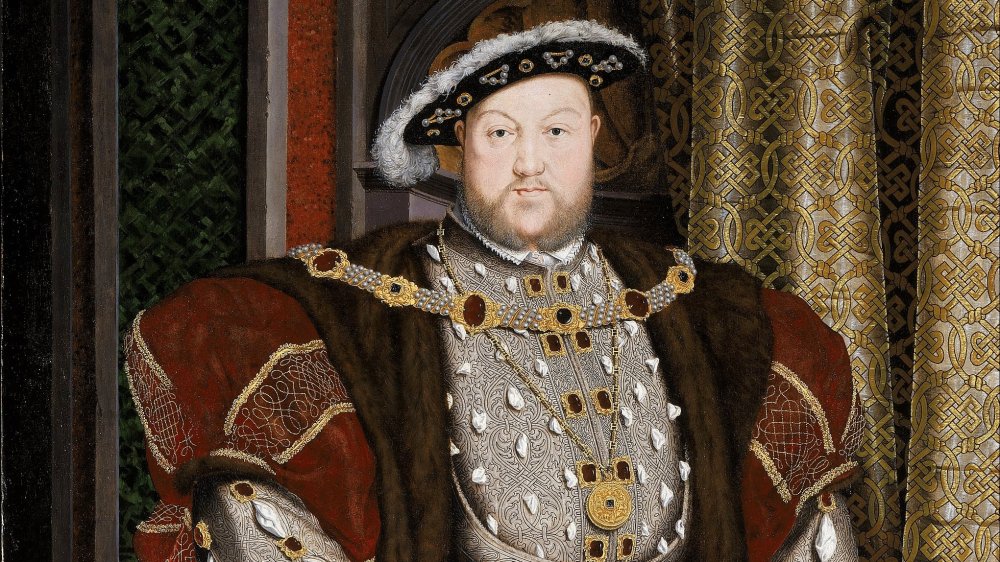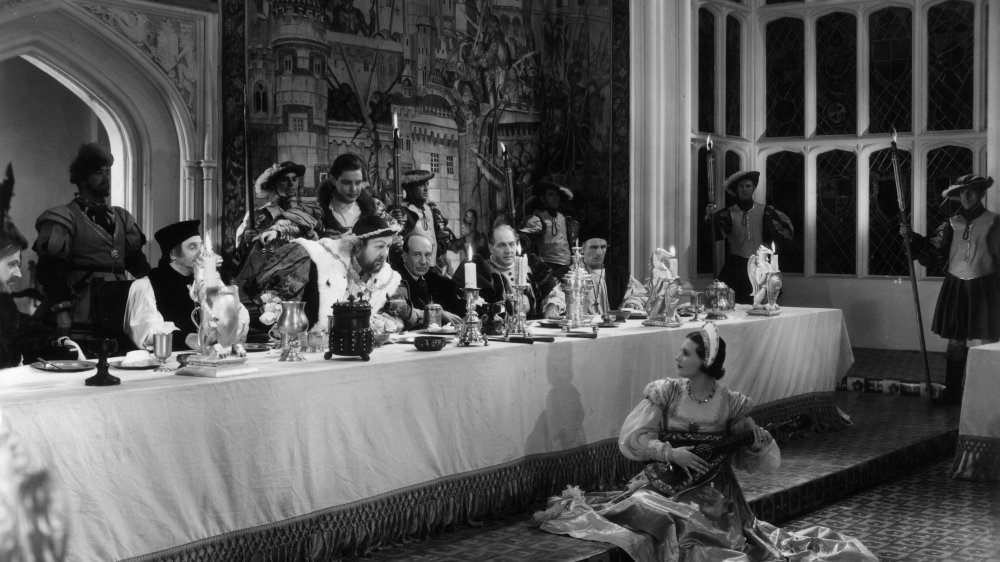What Henry VIII Typically Ate In A Day
"Oh, to be in England / now that April's there," wrote Robert Browning back in 1845. It was long after the day Henry VIII died — that was January 28, 1547 — but if they'd shared a timeline Bobby might have been pining for being in England and invited to the royal supper table. As the history of cuisine goes, England usually isn't ranked with, say, the French or the Italians in terms of European num-nums. Henry Tudor was famously a man of appetites, and lots of them. He loved music, and poetry, and dance; loved sports, and participated in a number of them personally, including jousting; and, of course, mistresses, some of whom he even married. But the table. Oh, the table. As Henry grew into his role as King of England he also grew into — bigger-sized clothing, topping out with a reportedly 54-inch waist. The man became whopping. After all, he was king — what would be denied him? Certainly not food.
And don't forget dessert
If you're the kind of person who likes a little variety on your plate (or, in this case, a lot of variety, and a lot of plates), the royal court of Tudor England wasn't such a bad place to be, according to Historic Royal Palaces. Meat? Lots of meat, both domesticated animals and wild game — venison (yes, Bambi's ancestors), boar, and even beaver. On the domesticated side, fleshy dishes would be made from beef, lamb, pork, and oxen, and all manner of poultry — including swans and peacocks. Religious practice forbade the consumption of meat on Fridays, and so fish were substituted, History Extra tells us. Raw fruits and vegetables were considered peasant food and probably unhealthy, and so not much in evidence, but baked goods were another matter. Bread was popular; English pies were commonplace, using fruit, but also meat pies, such as mincemeat that included actual minced meat in the recipe, and other kinds of meats and sausages. And gravy. Creamy dairy added to the possibilities for sweets and expanding waistlines. In the end (or the middle, depending on how you want to look at it), Henry paid a fearsome price: by the time he died at age 55, in all likelihood he was suffering from gout, diabetes, and high blood pressure. A salad wouldn't have killed him. Depending on how much dressing he used.

